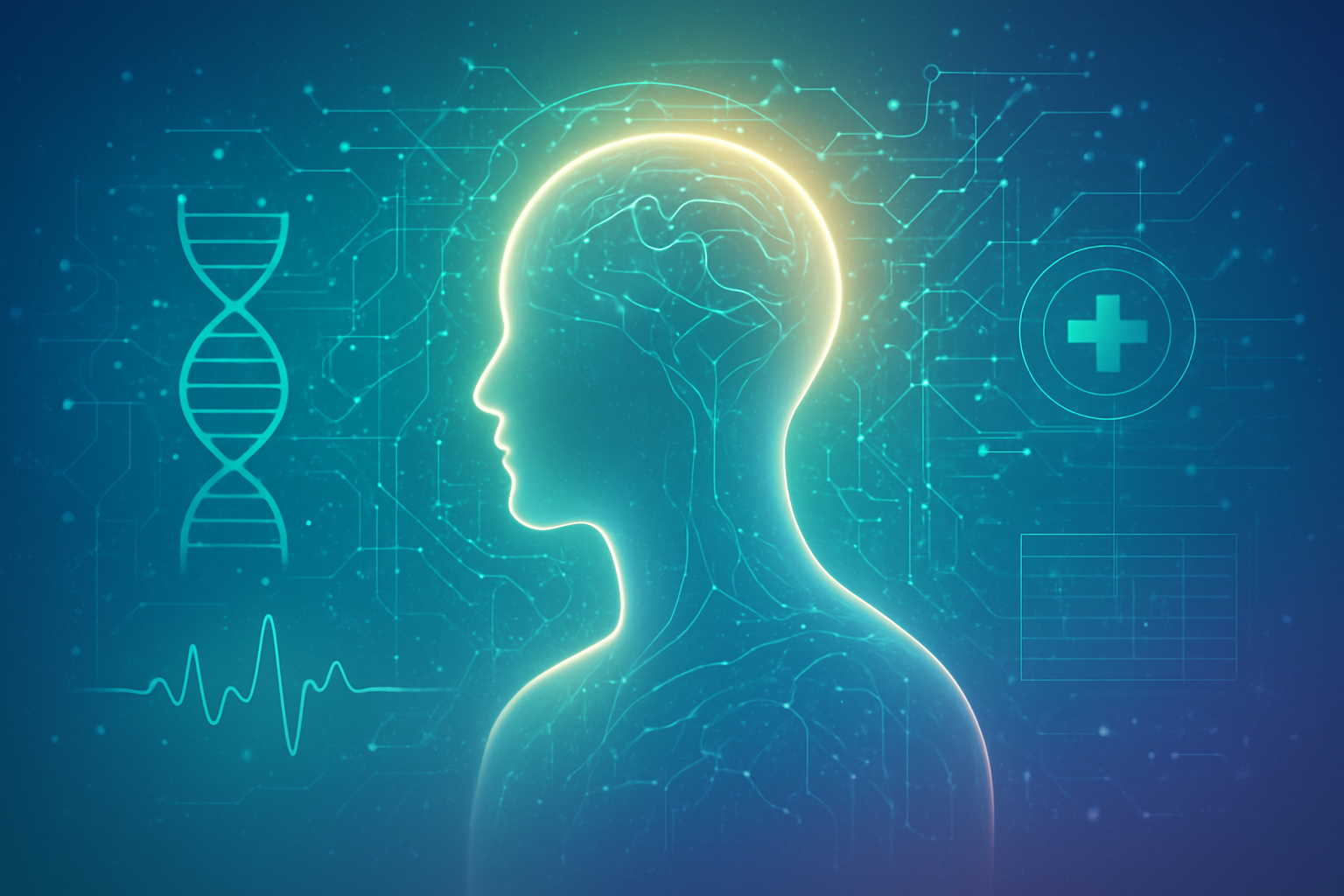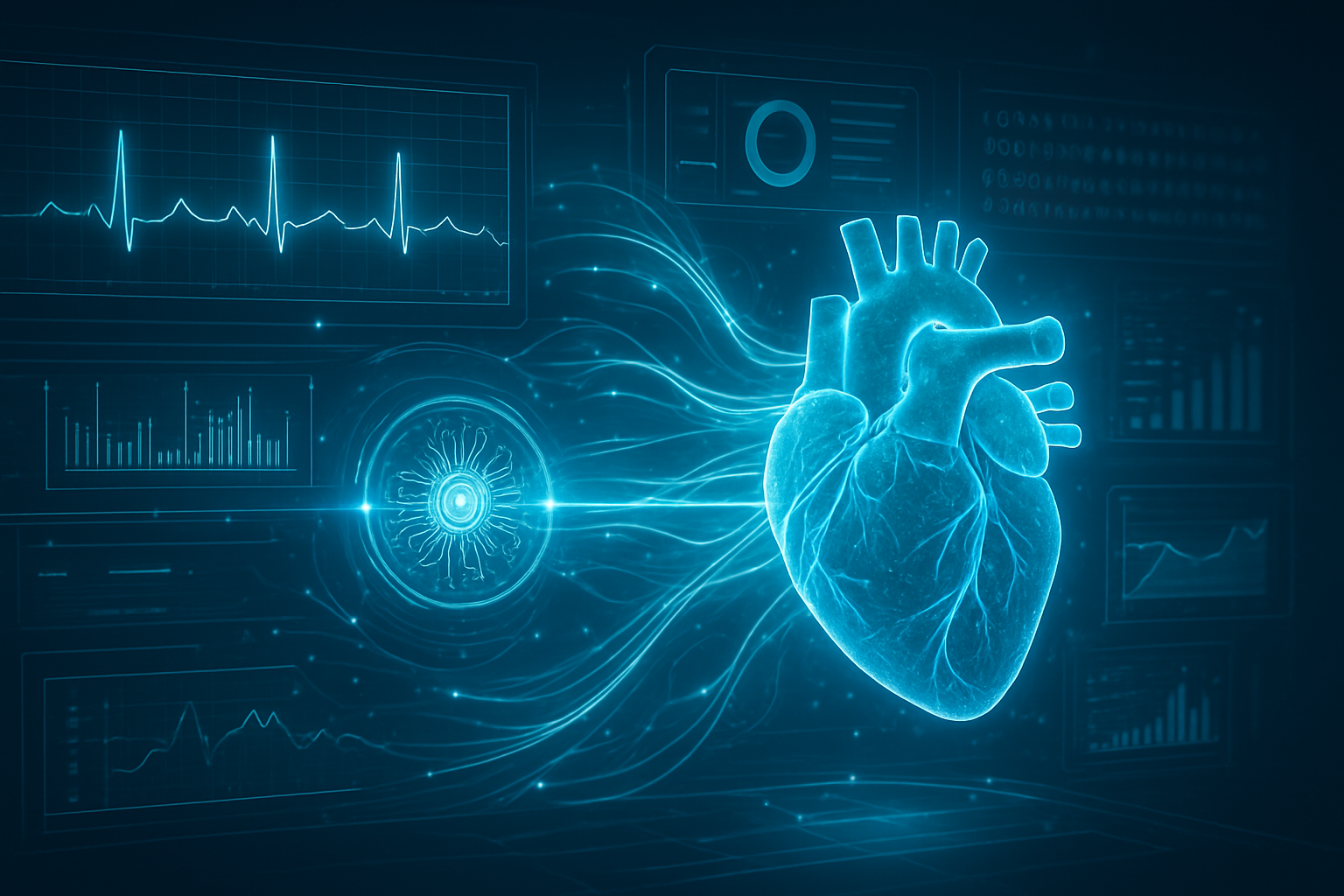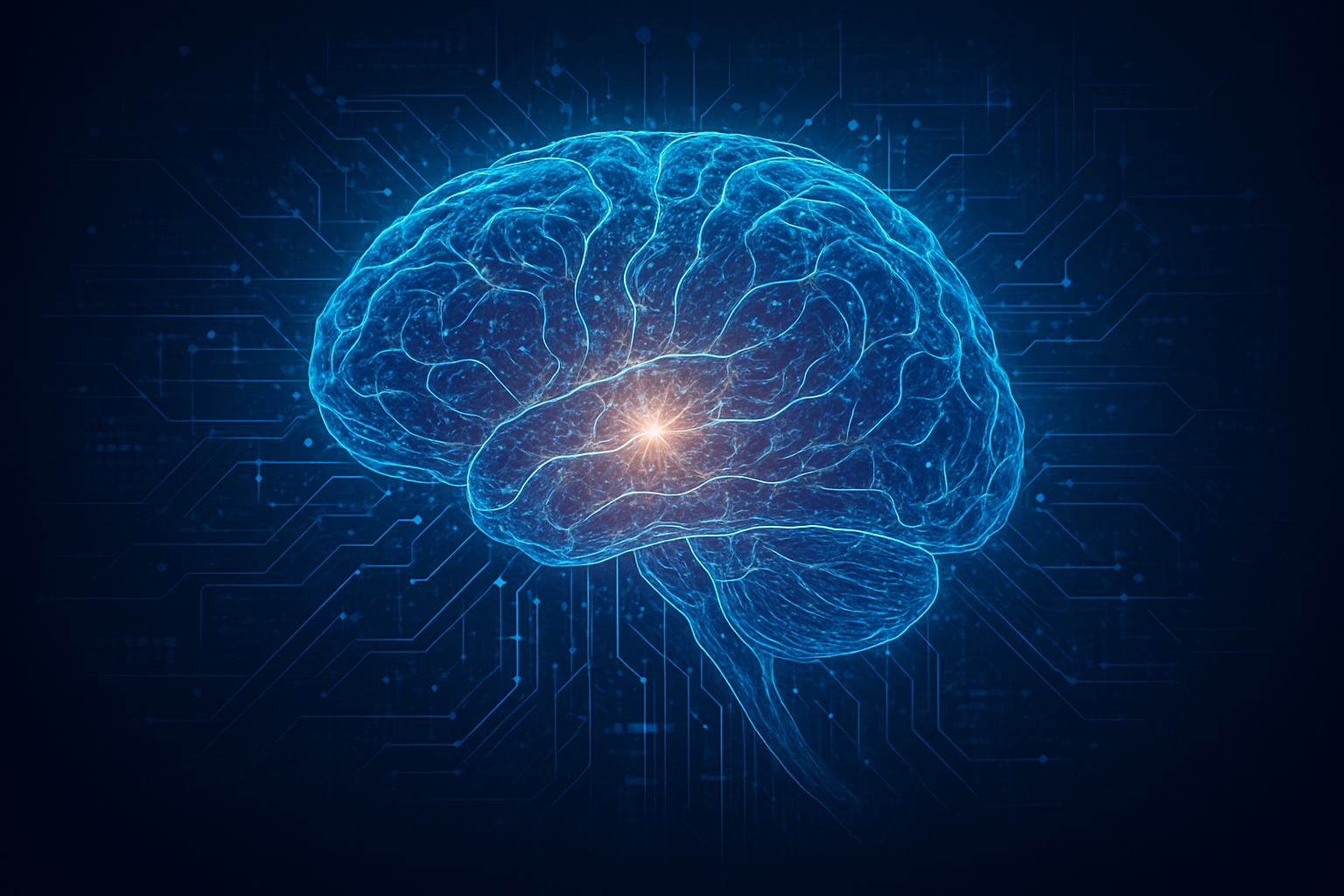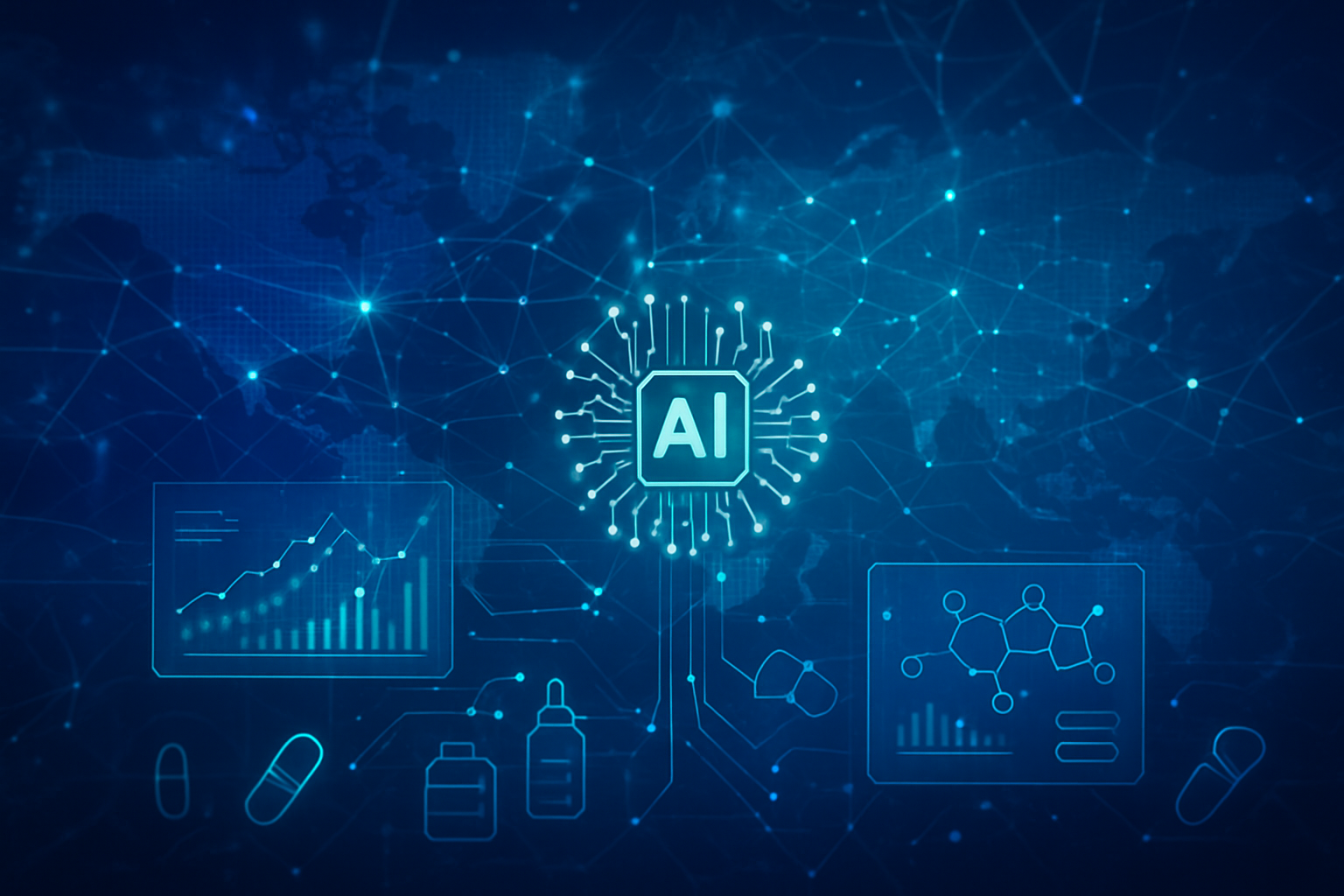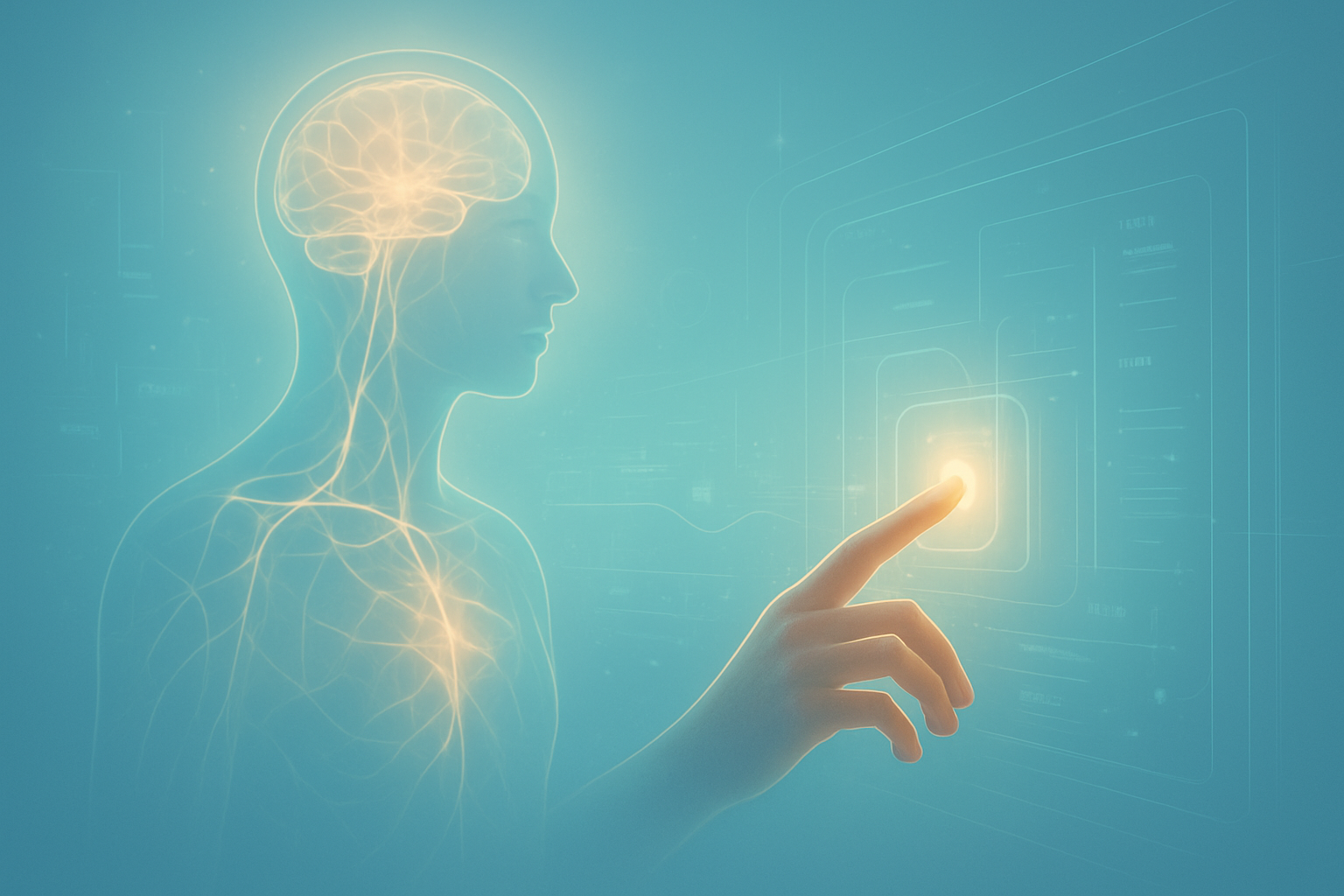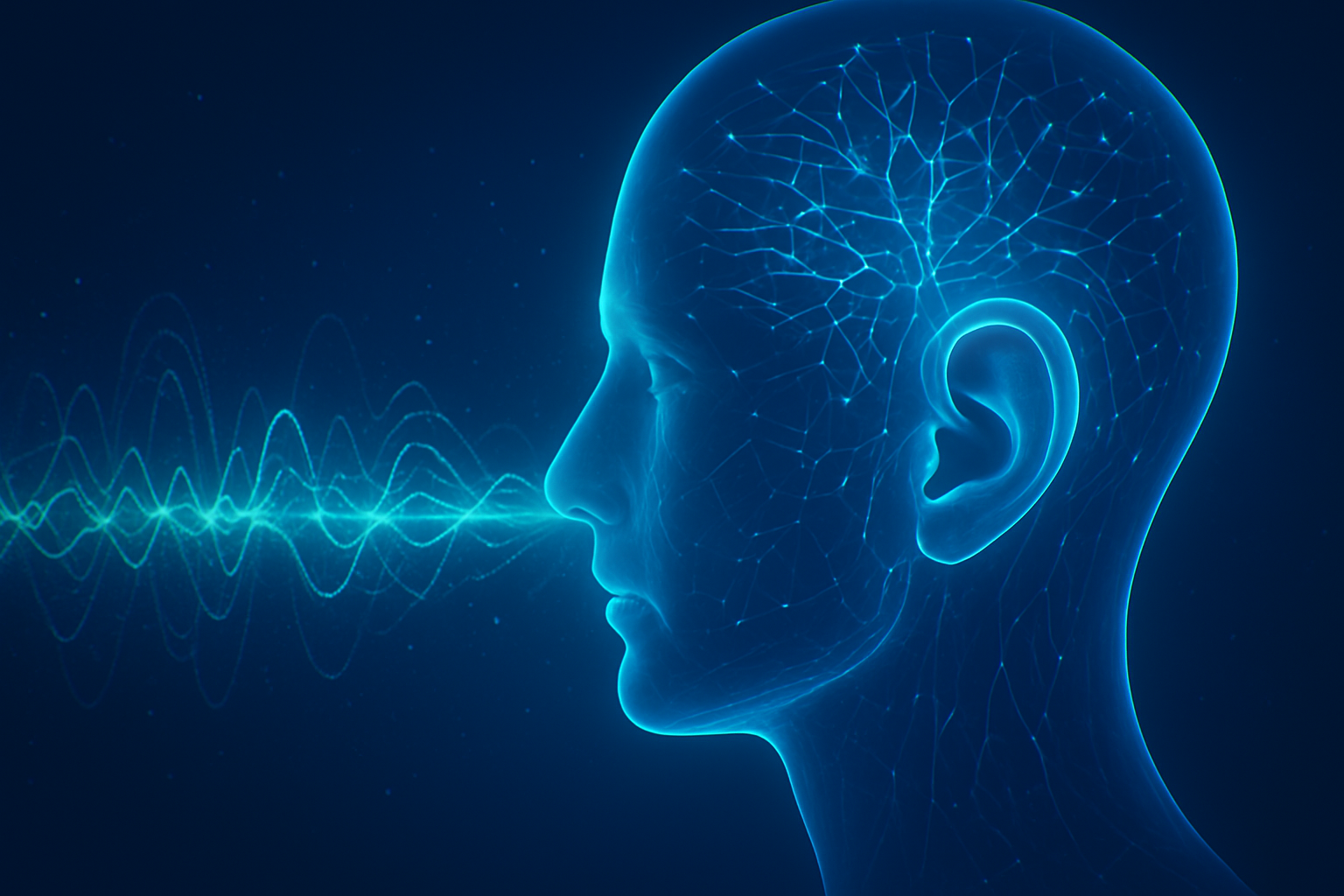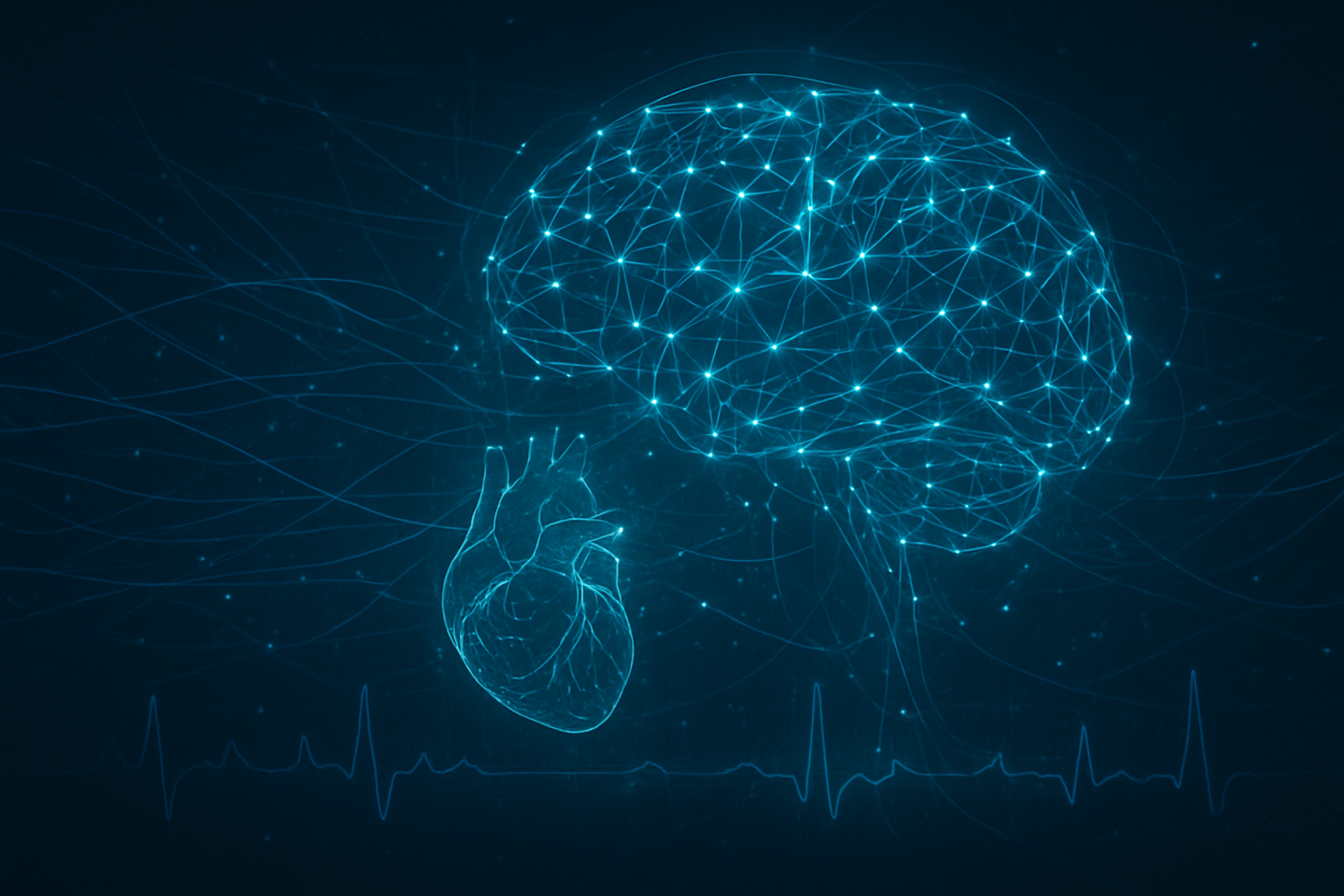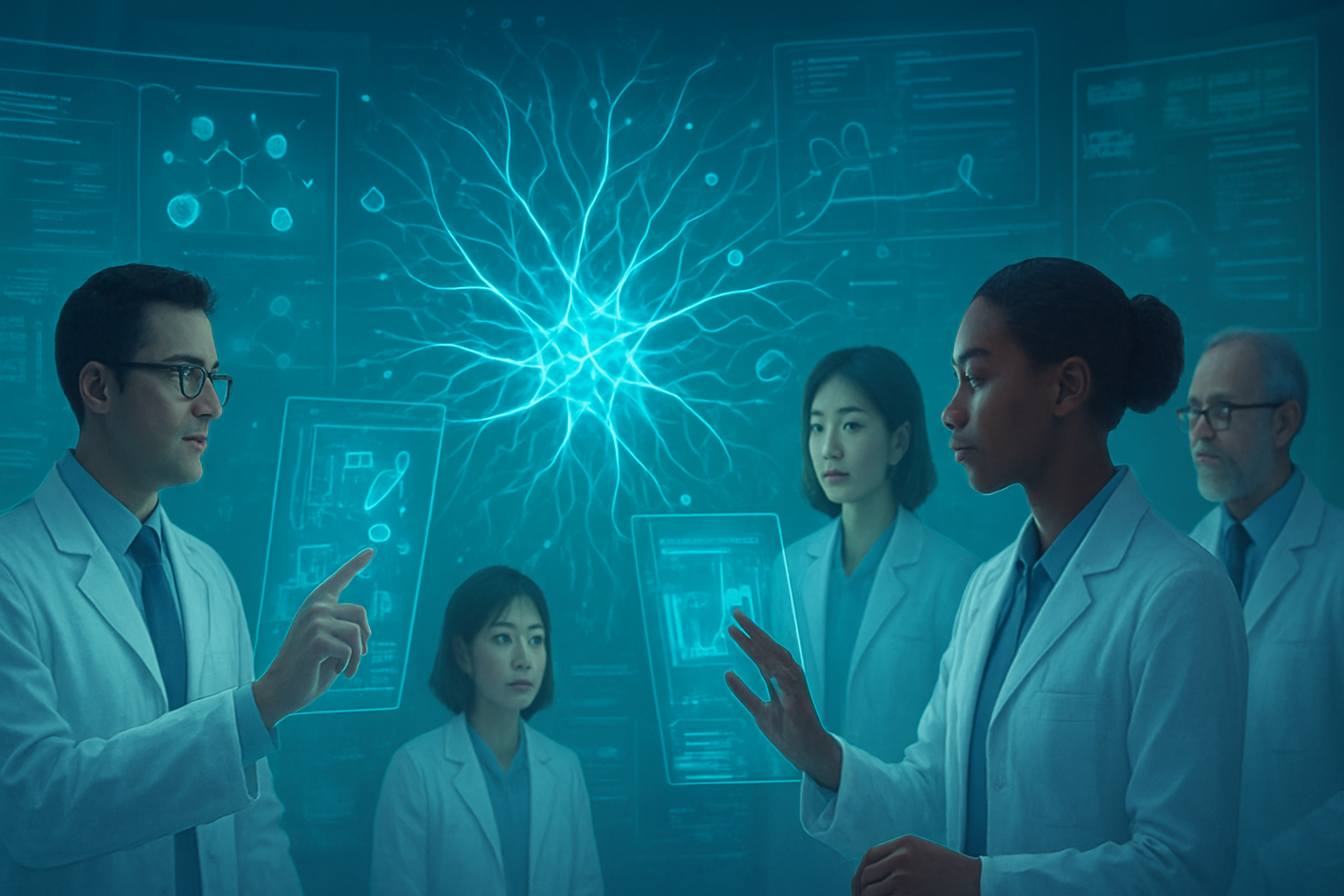Artificial intelligence (AI) is rapidly transcending its origins within the technology sector, becoming an indispensable force that is fundamentally reshaping traditional industries. From the intricacies of healthcare to the precision of manufacturing, the sustainability of agriculture, the dynamism of finance, and the complexity of logistics, AI is driving unprecedented levels of efficiency, innovation, and strategic advantage. This widespread integration signifies a pivotal moment in the evolution of AI, marking its transition from a specialized tool to a foundational technology that promises to redefine global economies and societies. The immediate significance lies in AI's capacity for advanced data analysis, predictive modeling, automation, and real-time decision-making, offering transformative benefits that were once unimaginable.
The Technical Core: How AI is Redefining Industry Capabilities
The current wave of AI applications in non-tech sectors is underpinned by sophisticated advancements in deep learning, machine learning, computer vision, natural language processing, and reinforcement learning. These technical capabilities allow AI systems to process vast, complex datasets, identify intricate patterns, and make highly accurate predictions or autonomous decisions, far surpassing previous rule-based or manual approaches.
In healthcare, AI leverages deep learning networks (e.g., ResNet101) to achieve remarkable accuracy in medical image analysis, detecting diseases like cancer and Alzheimer's years in advance. Generative AI and Large Language Models (LLMs), built on transformer architectures, are streamlining clinical note-taking and aiding in drug discovery by simulating molecular interactions. This differs from older systems that relied on simpler algorithms and extensive human feature engineering, as modern AI directly processes unstructured data, extracting complex features automatically at exceptional speeds.
Manufacturing is deploying AI-powered machine vision systems, combining high-resolution cameras and sensors with deep learning algorithms for anomaly detection. These systems provide predictive maintenance, anticipating equipment failures with unprecedented accuracy, and automating quality control with precision that far exceeds human capabilities. Collaborative robots (cobots) are becoming more sophisticated, guided by vision-language-action models. Historically, manufacturing relied on reactive maintenance and manual inspections; AI introduces proactive, predictive, and adaptable systems that learn from data, minimizing downtime and human error.
For agriculture, AI-driven drones equipped with multispectral and hyperspectral sensors, alongside machine learning algorithms, collect real-time data on soil moisture, nutrient levels, and plant health with centimeter-level accuracy. This enables precision spraying, targeted irrigation, and early disease detection, optimizing resource use by 20-40% and increasing productivity by up to 20%. Traditional farming involved extensive manual labor and broad application of resources, whereas AI provides granular, real-time analytics and automated decision-making, leading to optimized resource management and sustainability.
In finance, sophisticated machine learning (e.g., logistic regression, autoencoders) and deep learning models (e.g., CNNs, RNNs) are used for real-time fraud detection and algorithmic trading. Natural Language Processing (NLP) models analyze news sentiment and regulatory filings, while reinforcement learning agents adapt trading strategies. This moves beyond static, rule-based fraud detection and human analysis by offering adaptive models that process massive, diverse datasets, including unstructured data, enabling faster and more accurate decision-making in dynamic markets.
Finally, logistics benefits from machine learning algorithms and AI optimization techniques that analyze real-time data from GPS, traffic cameras, and weather feeds. This facilitates dynamic route optimization, continuously adjusting delivery paths to reduce fuel consumption and delivery times. Warehouse automation uses AI-powered robots for picking, packing, and sorting. This is a significant leap from traditional static route planning and reactive problem-solving, providing highly adaptive, predictive, and autonomous capabilities that enhance efficiency and cost-effectiveness.
Initial reactions from the AI research community and industry experts are largely optimistic, acknowledging AI's "transformative force" in enhancing efficiency and unlocking new opportunities. However, caution is also emphasized regarding ethical AI development, bias, transparency, data quality, high implementation costs, and the need for new skill sets. The urgent need for responsible AI governance and explainable AI (XAI) is a recurring theme to build trust and ensure compliance.
Reshaping the Corporate Landscape: Who Benefits and Who Faces Disruption
The pervasive integration of AI into non-tech sectors is profoundly impacting the competitive dynamics among AI companies, tech giants, and startups, creating both immense opportunities and significant disruptions.
In healthcare, specialized AI firms like Aidoc and GNS are thriving by offering intelligent diagnostics and drug discovery platforms. Tech giants such as Microsoft (NASDAQ: MSFT), Google (NASDAQ: GOOGL), IBM (NYSE: IBM), NVIDIA (NASDAQ: NVDA), Philips (NYSE: PHG), and Siemens Healthineers (ETR: SHL) are leveraging their cloud infrastructure and broad AI capabilities to partner with healthcare providers, driving advancements in medical imaging and personalized medicine. Startups like Abridge and Viz.ai are disrupting with niche solutions, automating clinical notes or enhancing CT scan analysis, often becoming attractive acquisition targets. This market, projected to grow at a CAGR of 38.5% (2024-2030), emphasizes strategic partnerships and the need for explainable AI to overcome high initial costs and data privacy concerns.
Manufacturing sees AI companies specializing in industrial automation and computer vision, such as those offering automated optical inspection (AOI) with up to 97% accuracy, experiencing high demand. Tech giants like IBM are providing "smart factory" solutions, integrating AI with IoT for real-time process optimization. Startups such as Vicarious and SparkCognition are innovating in predictive maintenance and production optimization. While high upfront investment is a barrier, AI offers manufacturers a significant competitive edge through improved operational efficiency and reduced waste, leading to a dynamic landscape where agile startups can disrupt and larger players consolidate.
For agriculture, AI solution providers focusing on crop management software and predictive analytics are key beneficiaries. Microsoft's FarmVibes.AI tool offers advanced mapping and "what-if" analyses for growers. Startups like Blue River Technology (acquired by John Deere (NYSE: DE)) have pioneered AI for targeted weed and pest identification, reducing chemical use. The global AI in agriculture market is expected to reach USD 12.95 billion by 2033, driven by the need for precision farming and sustainability. AI is transforming farmers' roles, shifting them from manual laborers to overseers of smart agricultural systems.
In finance, companies specializing in AI for fraud detection, credit risk management, and personalized advice are thriving. Tech giants like Google Cloud provide foundational AI technologies and cloud infrastructure for data analytics and customer servicing. Disruptive startups such as Betterment and Wealthfront offer AI-driven robo-advisors, while Darktrace and ZestFinance enhance fraud prevention and credit scoring. AI is shifting the market towards insights-driven lending, but also introduces risks like biased models and data breaches, necessitating regulatory adjustments and strong consumer protection.
Finally, logistics sees growth for AI companies in route optimization, warehouse automation, and predictive supply chain analytics. Amazon (NASDAQ: AMZN), FedEx (NYSE: FDX), and UPS (NYSE: UPS) are integrating AI into their operations, influencing third-party logistics (3PLs). IBM, Intel (NASDAQ: INTC), Microsoft, and Oracle (NYSE: ORCL) are key players providing scalable infrastructure. Startups like OptimoRoute and Nuro are innovating in efficient delivery routes and autonomous last-mile delivery. With the AI in logistics market projected to reach USD 549 billion by 2033, AI offers a significant competitive edge through streamlined operations, reducing costs, and improving service, while autonomous technologies disrupt traditional manual labor.
Overall, AI companies are the core innovators, benefiting from deep expertise but often needing partnerships to scale. Tech giants leverage their vast resources and cloud infrastructure to offer comprehensive platforms, positioning themselves as full-stack providers. Startups are crucial for disruption, addressing niche problems with agility and often becoming acquisition targets. The competitive landscape is dynamic, marked by collaborations, acquisitions, and a continuous race to deliver more efficient, intelligent, and personalized solutions.
A Broader Lens: AI's Societal Canvas and Historical Parallels
The widespread integration of AI into non-tech sectors represents a profound evolution in the broader AI landscape, signaling its maturation into a foundational, general-purpose technology. This current era is characterized by AI acting as an "amplifier" for other innovations, accelerating progress and unlocking new possibilities across diverse domains. The proliferation of "agentic AI," capable of autonomous multi-step workflows, and generative AI, which creates human-like content, are key trends driving this expansion.
The economic impact is staggering, with AI projected to contribute an additional $15.7 trillion to the global economy by 2030. This growth stems from increased labor productivity, the creation of new products and services, and optimized operational efficiencies across industries. However, concerns persist regarding AI's potential to widen economic disparities and concentrate wealth within "super firms."
Societally, AI is reshaping the job market. While it automates routine tasks, potentially leading to job displacement in some areas, it simultaneously creates new roles in data science, AI engineering, and design. More importantly, AI augments existing roles, enabling workers to focus on more creative and complex tasks. The "AI + human" model, where human oversight and critical thinking complement AI's analytical power, is proving to be the most valuable approach. AI's ability to solve complex problems, particularly in healthcare and personalized services, holds the potential to improve the overall quality of life.
However, this transformative power comes with significant ethical and regulatory concerns. Algorithmic bias, embedded from training data, can lead to discriminatory outcomes in critical areas like hiring or medical diagnoses. The "black box" nature of many AI systems raises questions about transparency and accountability, especially in high-stakes domains. Data privacy and security remain paramount, with the reliance on vast datasets necessitating robust safeguards against breaches and unauthorized access. Job displacement, misinformation spread by AI, and intellectual property issues also demand careful consideration. Governments and regulatory bodies, exemplified by the EU AI Act and GDPR, are actively developing frameworks to promote transparency, fairness, human oversight, and accountability.
Comparing this era to previous AI milestones highlights the monumental shift. Early AI, rooted in the 1950s with Alan Turing and the coining of "artificial intelligence," involved rule-based expert systems. The "AI boom" of the 1980s saw advancements but was limited by explicit programming. The current "Deep Learning era," commencing around the 2010s, represents a significant leap. Boosted by advancements in deep learning algorithms and "big data," AI systems have achieved breakthroughs in tasks previously considered intractable, such as outperforming humans in image recognition (by 2015), defeating world champions in complex games like Go (AlphaGo in 2016), and generating human-quality text and images (GPT-3, DALL-E, ChatGPT since 2020). Unlike earlier iterations, modern AI learns from data patterns without explicit instructions, making it far more versatile and adaptable across diverse non-tech sectors at an unprecedented pace.
The Horizon: Charting AI's Future Trajectory
The future of AI applications across non-tech sectors promises continued rapid evolution, driven by increasing sophistication, accessibility, and strategic integration. Experts predict a future where AI will not only augment human capabilities but also enable entirely new paradigms of operation and service delivery.
In the near term, AI and generative AI (GenAI) will significantly enhance patient care in healthcare by automating administrative tasks, personalizing treatment plans, and accelerating drug discovery. In manufacturing, the focus will be on "smart factories" with AI-powered predictive maintenance, quality control, and supply chain optimization. Agriculture will see further advancements in precision farming, with AI-driven robotics and drones becoming more commonplace. Finance will expand GenAI applications for customer service, risk management, and hyper-personalized financial advice, while logistics will leverage AI for dynamic route optimization, warehouse automation, and real-time supply chain visibility.
Long-term developments will see healthcare shift towards a "5P" model (Predictive, Proactive, Personalized, Participatory, and Precise), with AI enabling routine genomic sequencing and near-perfect diagnostic accuracy. Manufacturing will achieve mass customization and sustainable production through ubiquitous industrial AI. Agriculture will move towards "Agriculture 4.0," with autonomous livestock farming and AI-driven insights addressing global food security. Finance will embrace AI for comprehensive financial stability risk management and highly adaptive investment strategies. Logistics will feature widespread autonomous transportation networks and AI-powered supply chain resilience against global disruptions.
However, several challenges need to be addressed. Across all sectors, data quality, security, and privacy remain paramount. Ethical concerns, particularly algorithmic bias and the need for transparency (explainable AI), are critical. The high initial costs of AI implementation and the integration with legacy systems pose significant hurdles, especially for smaller entities. A substantial skills gap in the workforce requires continuous reskilling and upskilling initiatives. Regulatory frameworks are still evolving, particularly for adaptive AI algorithms and generative AI, demanding a careful balance between innovation and consumer protection. Furthermore, resistance to adoption due to fear of job displacement or lack of understanding must be managed through clear communication and demonstrated benefits.
Experts predict that AI will increasingly augment, rather than replace, human workers, allowing them to focus on more complex and creative tasks. The future will involve "platform thinking" in AI innovation, creating collaborative ecosystems across industries. The convergence of AI with other emerging technologies like 5G, edge computing, and quantum computing will unlock new possibilities. Addressing data fragmentation, ensuring ethical deployment, and fostering digital literacy will be crucial for equitable resource distribution and securing long-term viability across these transformed sectors.
The AI Epoch: A Concluding Assessment
The journey of AI into non-tech sectors represents a defining epoch in its history, marking a profound shift from a specialized technological domain to a ubiquitous, general-purpose utility. The key takeaway is AI's unparalleled ability to drive operational efficiency, generate substantial cost reductions, enable superior data-driven decision-making, and facilitate hyper-personalization across industries. From enhancing diagnostic accuracy in healthcare to optimizing supply chains in logistics, AI is not just improving existing processes but fundamentally redefining industry capabilities.
This development's significance in AI history cannot be overstated. It signifies the maturation and democratization of AI, moving beyond the confines of "tech companies" to become an accessible amplifier for innovation across the global economy. The economic projections, estimating a $15.7 trillion contribution to global GDP by 2030, underscore its pivotal role. More importantly, it solidifies the "AI + human" model as the most valuable approach, where AI augments human intelligence and creativity, rather than solely automating it.
The long-term impact will be a sustained boost in productivity, economic growth, and the creation of new, AI-augmented job roles. AI holds the potential to address some of humanity's most pressing challenges, from climate change to global health disparities. However, this future hinges on a vigilant focus on ethical AI development, robust regulatory frameworks, and proactive governance to ensure fairness, transparency, and equitable distribution of benefits. The increasing dependence on core AI infrastructure providers also signals a potential centralization of power in the digital economy.
In the coming weeks and months, watch for intensifying discussions around ethical AI deployment and governance, particularly in sensitive areas like non-clinical healthcare. Evolving regulatory frameworks will be crucial, especially in heavily regulated sectors like finance. Efforts to bridge the "AI divide," ensuring access for small businesses and farmers, will gain prominence. The rapid advancement of "agentic AI" tools, acting as a new workforce, will be a key development to monitor, as will the continuous focus on data quality and standardization as the bedrock for effective AI. Finally, observe how AI continues to integrate with other emerging technologies like IoT, creating synergistic effects that drive further innovation and reshape our world.
This content is intended for informational purposes only and represents analysis of current AI developments.
TokenRing AI delivers enterprise-grade solutions for multi-agent AI workflow orchestration, AI-powered development tools, and seamless remote collaboration platforms.
For more information, visit https://www.tokenring.ai/.

